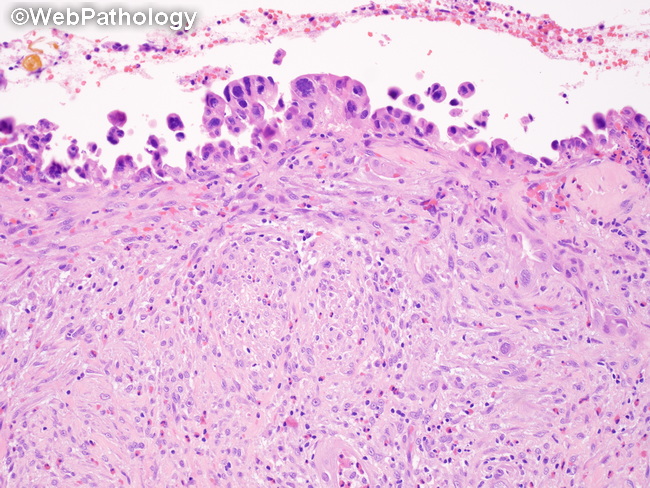Gallbladder Dysplasia : Clinical Features


Comments:
Clinical Features: Patients are in their 50's and 60's. The risk factors are identical to those for invasive carcinoma, including geography, gallstones, sclerosing cholangitis, and anomalous union of pancreatobiliary ducts. Dysplasia is clinically silent and usually discovered incidentally in cholecystectomies performed for other reasons or it is found adjacent to invasive carcinoma.In routine cholecystectomies for gallstones in North America, the incidence of low-grade dysplasia, high-grade dysplasia, and invasive carcinoma is <5%, <1%, and <0.2% respectively. In high-risk countries like Mexico and Chile, 15% of cholecystectomies harbor dysplasia. About 40% to 60% of invasive gallbladder carcinomas show associated dysplasia. This image shows high-grade dysplasia.



